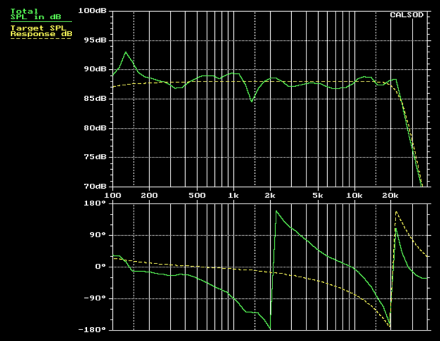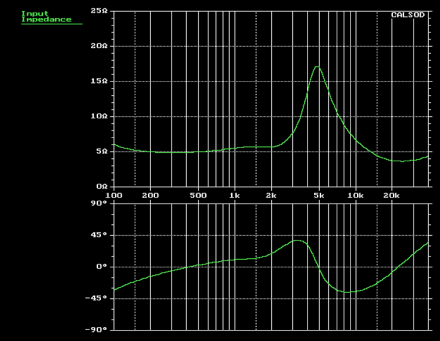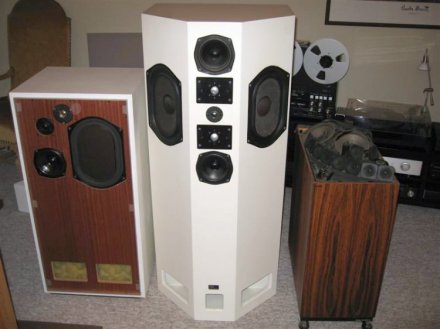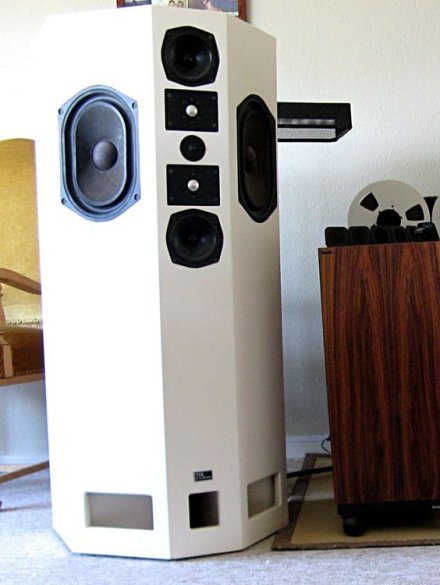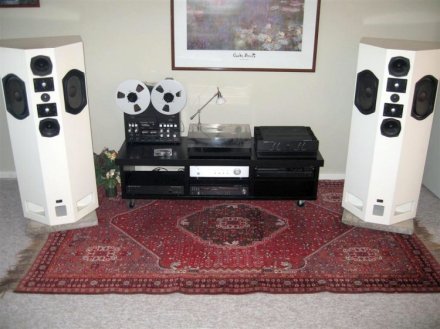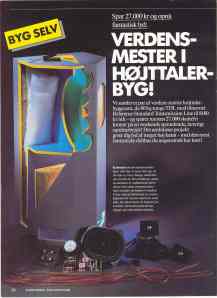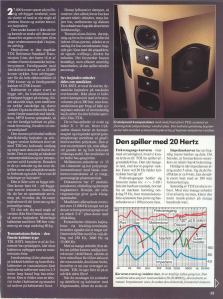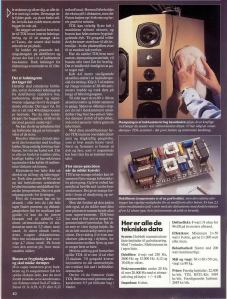Since my second article back in February, I’ve done some re-thinking on drivers. I got a sample of the Vifa, but it my mind it was just too small. And too expensive for what it was. After finding and pouring over plans, I concluded that I could move to a 5″ class driver. After hours studying the Zaph Audio 5.5″ Driver Comparison page along with countless other resources, I decided try the SB Acoustics SB15NRXC30-8-UC for my prototype. For about $55, the distortion measurements are very close to the $200-$300 drivers he surveyed. On paper, it looks like the best 5″ value around. We’ll see how it sounds.
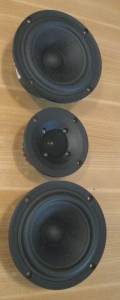
Option 1: center panel layout using a single Seas 27TBCD/GB-DXT
For the tweeter, I’ve had two ideas. One is to abandon the Tweeter-Super Tweeter-Tweeter arrangement completely and use a single tweeter with exceptional off-axis response instead. That is the reason Wright really went to the T-ST-T arrangement from what I can tell, to get good off-axis (the way the speaker was intended to be used) high frequency extension, not to extend on-axis response to 35K. The tweeter capable of crossing over at around 2K and yet having flat response at 20K @ 30 degrees off axis? Why the Seas SEAS 27TBCD/GB-DXT of course. The published data sheet shows the response 30 degrees off axis is only 1-2 dB down from the on-axis response. Wow!
This would be a major break with tradition though, which is disturbing to me. The center column then becomes a “regular” M-T-M. I wonder if Wright were alive today though if he would not do the same thing.

Driver layout using the SB Acoustics SB29RDCN-C000-4 and Vifa NE19VTC-04
To take a more traditional approach, I’ve decided to change from the Scanspeak D2608/9130 that I had originally had my eye on to the SB Acoustics SB29RDCN-C000-4. This will allow me to keep the original driver spacing. I’d originally shied away from it due to the 4 ohm impedance, but with 94 dB sensitivity, I’ll have all sorts of room to manipulate the impedance in the treble. The M-T-ST-T-M configuration (I’m still using the NE19VTC-04 for the supertweeter) will look something like the picture to the left.
35.091074
-106.566226

